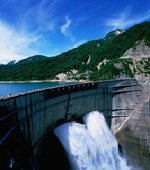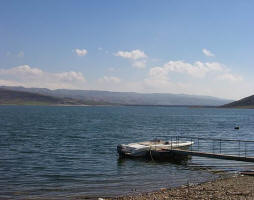 Recent Drought Trends Not So Cut-and-Dried
Recent Drought Trends Not So Cut-and-Dried
The picture of expanding drought painted by the Intergovernmental Panel on Climate Change may not be quite as arid as it looks. A technique commonly used to estimate the severity of a drought may actually overestimate the effects of dry spells, new research suggests. Worldwide climate data combined with a more refined technique for assessing droughts reveal that they haven't expanded as much in recent decades as previously thought.
Researchers characterize dry spells using the Palmer Drought Severity Index (PDSI), which assesses the balance between precipitation in a region and the loss of soil moisture, either by direct evaporation or via plants that suck water out of the soil and then lose it to the atmosphere through their leaves. The method, which typically estimates the potential for evaporation using only the temperature and latitude at a site, is popular largely because it is easy to use, says Justin Sheffield, a hydrologist at Princeton University. "[PDSI] is simple, but it's relatively crude," he notes.
Researchers have long known that the potential for evaporation also depends on factors such as wind speed, relative humidity, and the amount of sunlight reaching the ground at various wavelengths. But global databases of those parameters haven't been easy to come by, Sheffield says. Now, using satellite data gathered in recent decades, Sheffield and his colleagues have reconstructed climate and estimated those parameters as far back as 1948. Using the data, the researchers then reassessed trends in drought severity between 1948 and 2008.
Although previous studies have suggested that droughts have increased over that 60-year period, the team's new analysis hints that the increase in drought has been substantially overestimated. For instance, the new assessment technique found that between 1980 and 2008, the global area stricken by drought grew by approximately 0.08% per year—less than one-seventh the increase estimated by the temperature-only version of PDSI, the researchers report online today in Nature.
The revised technique for assessing drought severity "gives a much better match to reality," says Sonia Seneviratne, a climate scientist at the Swiss Federal Institute of Technology in Zurich. The team's results confirm the complexity of the processes that lead to changes in drought conditions, she notes.
Although the study points out the flaws of using PDSI to estimate global drought trends, the revision doesn't change the picture equally in different parts of the world, noted Piers Forster, a climate physicist at the University of Leeds in the United Kingdom, in a statement to the United Kingdom's Science Media Centre on 14 November. "Droughts in the Europe, Africa, and China are still believed to have become more severe since 1950," he said. And, he added, when it comes to crop yields, drought isn't the only danger: High temperatures at certain times of the year can kill off crops. "This study is an important contribution highlighting the complexity of drought prediction but it does not make me downgrade the substantial threat to harvests posed by climate change."
Several factors have trimmed the increase in the extent of drought in recent decades, Sheffield says. For one, the amount of radiation reaching the ground slightly decreased during the period, especially from the 1960s through the 1990s, owing to increased air pollution that scatters sunlight of certain wavelengths back into space. Also, he notes that wind speeds generally decreased over land during the period the team studied, a trend that has helped reduce evaporation.
| Contact information |
Sid Perkins
|
|---|---|
| News type | Inbrief |
| File link |
http://news.sciencemag.org/sciencenow/2012/11/recent-drought-trends-not-so-cut.html |
| Source of information | Sid Perkins |
| Keyword(s) | drought |
| Subject(s) | HYDRAULICS - HYDROLOGY , INFORMATION - COMPUTER SCIENCES , METHTODOLOGY - STATISTICS - DECISION AID , NATURAL MEDIUM , RISKS AND CLIMATOLOGY , WATER DEMAND |
| Relation | http://dx.doi.org/10.1038/nature11575 |
| Geographical coverage | n/a |
| News date | 06/12/2012 |
| Working language(s) | ENGLISH |
 you are not logged in
you are not logged in





